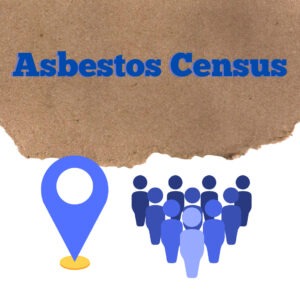Key takeaways: The EU banned asbestos in 2005. Since then, though, little effort has been made to contain, remove, or abate the existing asbestos in both public and private buildings. A few countries, like Poland and Spain, are instating an asbestos census, which is a way for communities to track and allocate assistance for asbestos in buildings. These countries aim to completely remove asbestos from public buildings by 2028, and private buildings by 2032. The U.S., although much larger, can learn from these countries as they strategize for an asbestos-free future.

What is an Asbestos Census?
The European Union banned the usage and import of all asbestos in 2005, compared to the U.S.’ ban instated in 2024. Despite the ban—which only prohibited new uses for asbestos—the EU hasn’t sealed, removed, or abated a majority of their existing asbestos. Experts project that there will be an asbestos-caused public health crisis in the EU if substantial action isn’t taken. Some countries, like Poland and Spain, have begun enforcing asbestos censuses, which are lists (accessible to the public) that detail the location, extent, and age of existing asbestos in public buildings. In addition to the census, these countries have codified an asbestos removal plan: 2028 for public buildings and 2032 for private buildings. The census is serving as the reference point for the removal plan: different buildings (and sectors) will receive different amounts of support, depending on the amount of asbestos they contain.
The census in Spain is interesting because it has different levels: preliminary, basic, and detailed. The preliminary census contains anticipated asbestos levels based on prior abatement endeavors, the years of construction, and satellite images. The basic census incorporates fieldwork via drones to assess the presence of asbestos. The final round of the census—detailed—involves the inspection of each building by a trained professional. Local communities will keep a record of exactly where and to what extent asbestos exists within their buildings. Although a tiered consensus might seem extensive, Spain will be mitigating a serious public health crisis. They’re anticipating saving millions of dollars by preventing asbestos exposure, and the consequent development of asbestos-related diseases.
Can the U.S. Instate an Asbestos Census?
Given that the identification of asbestos is being revolutionized by Artificial Intelligence, it’s likely that the United States will adopt a similar approach. It’s important to note, though, that despite the EU’s ban in 2005, countries didn’t start taking action until decades later. So, the U.S. should look to these countries as exemplary of what to do and not to do, even as technology is transforming the asbestos abatement landscape. Obviously, the U.S. has much more land—and with that, more people potentially exposed and more buildings to inspect—than the countries in the EU have. This amplifies the asbestos problem, as states and local communities will have to spearhead abatement efforts (as compared to federal governments in the EU). Educating about the dangers of asbestos—and how removing it will prevent public health crises and collectively save citizens millions—will hopefully accelerate American efforts to remove it.
If you or a loved one has been diagnosed with mesothelioma, please call The Halpern Law Firm at 1 (800)-505-6000. We are here to help you navigate the legal process of filing a claim to receive compensation for your cancer diagnosis. We help mesothelioma victims and their families in Pennsylvania.
Sources:
https://www.uoc.edu/en/news/2022/174-asbestos
https://eurocontrol.apave.com/en/Our-News/Asbestos-census-what-it-is-and-how-to-do-it
https://eur-lex.europa.eu/legal-content/EN/TXT/PDF/?uri=CELEX:52014IE5005&from=EN
https://www.nytimes.com/2024/03/18/climate/biden-administration-bans-asbestos.html